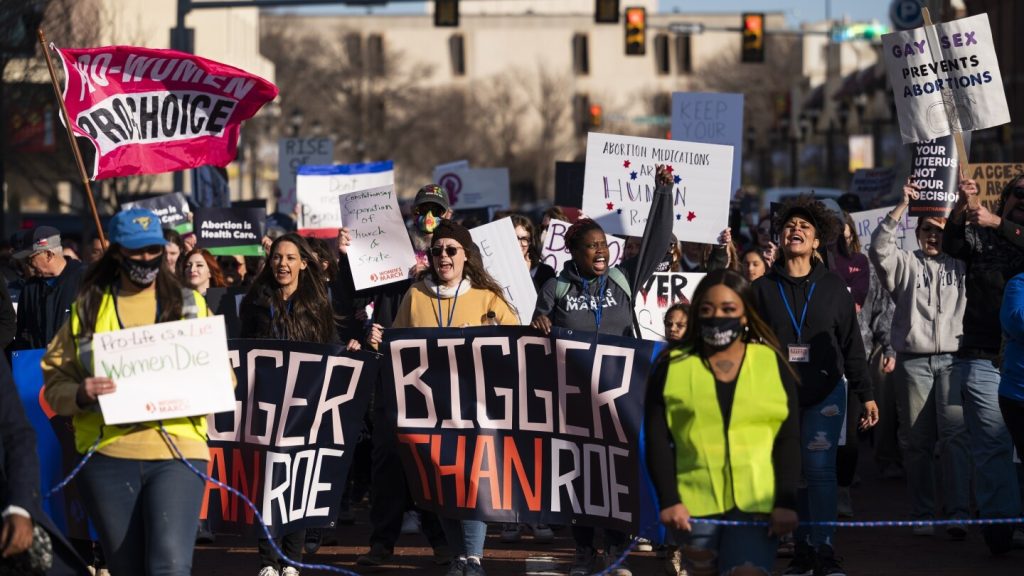In the United States, the future of abortion is being determined by judges, state lawmakers, and voters in the wake of the Dobbs v. Jackson Women’s Health Organization ruling by the Supreme Court. This ruling overturned Roe v. Wade and has sparked legislative action, protests, and numerous lawsuits across the country. Currently, abortion is banned at all stages of pregnancy with limited exceptions in 14 Republican-controlled states, while in three other states, it is barred after about the first six weeks. Most Democratic-led states have taken actions to protect abortion rights and have become sanctuaries for out-of-state patients seeking care.
The changing landscape of abortion access in the U.S. has made it more of a logistical and financial ordeal for many in conservative states. Despite the restrictions, the overall number of procedures done each month across the country has not decreased. Due to bans in Republican-led states, many people seeking abortions have had to travel to access care, leading to higher costs for transportation, lodging, and other logistical challenges. A study found that a significant number of abortions were performed for out-of-state individuals, with low-income patients and those lacking legal permission to be in the country facing additional barriers.
A significant shift in the provision of abortions has been the increasing use of pills rather than traditional procedures. Pills are now prescribed via telehealth and mailed to individuals in states with abortion bans. The laws in states like Colorado, Massachusetts, New York, Vermont, and Washington protect medical providers who prescribe the pills to patients in states with bans. This shift towards medication abortions has become a new frontier in the legal battle over abortion rights in the U.S. The U.S. Supreme Court recently rejected an effort by abortion opponents seeking to overturn the FDA’s approval of mifepristone, one of the drugs used in medication abortions.
Abortion has become a central issue in the 2024 presidential election, with protecting access emerging as a key theme for Democrats, including President Joe Biden. Former President Donald Trump, the presumptive Republican nominee, has expressed support for states deciding whether to restrict abortions. The issue of abortion will also be put directly before voters in several states, including Colorado, Florida, Maryland, and South Dakota, where ballot measures will ask voters to approve state constitutional amendments protecting or expanding access to abortion. The courts, including the Supreme Court, will play a crucial role in determining the future of abortion rights.
The aftermath of the Dobbs ruling has led to a multitude of legal challenges and questions regarding abortion bans and restrictions. Many of these challenges address how exceptions should apply, particularly in cases of life-threatening complications. Lawsuits in Texas, Idaho, and other states have raised questions about the legality and scope of abortion bans. While some bans have been put on hold by judges in states like Iowa, Montana, Utah, and Wyoming, the legal landscape surrounding abortion rights remains uncertain. The outcome of these legal battles will have a significant impact on the future of abortion access in the United States.


